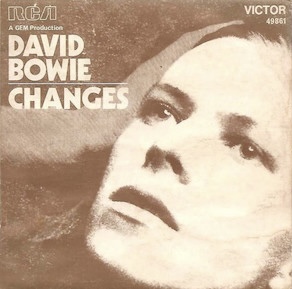
The end of November marks three years since I first tangled with my dear friend and close companion, Charles Bonnet. 36 months since I first saw the historical marker that wasn’t actually there. 1,095 days (ish) since I laid eyes on my lovely wife wearing Groucho Marx glasses and nose putty.
While my vision loss has progressed, my clinical exams are no longer an accurate representation of my visual function. The number of hallucinations I experience seems to have plateaued at a fairly robust level and my depth perception has gotten notably worse. Sometimes, navigation can be a real challenge.
I’m now at the stage where I’ve accepted that there’s no “right” time to get a cane and no threshold for vision loss that makes cane us acceptable. Do you have trouble with depth perception? Cane o’clock. Struggling with the loss of peripheral vision? Cane up, Buttercup. Looking to provide a visual indicator that pedestrians and motorists might want to give you some space? Cane time. While I haven’t pulled the trigger quite yet, I’m quite confident that an Ambutech folding mobility cane with a rolling marshmallow tip is in my very near future.
Usually, training is provided by an orientation and mobility (O&M) specialist, an expert typically made available by the state. According to the great state of North Carolina, however, because I have (thankfully) not been forced into unemployment by my vision loss, I do not qualify for this valuable resource. Fortunately, there are some fantastic nonprofits that provide assistance as well as some excellent online resources.
When using a mobility cane, there are two main techniques to choose from: constant contact and two point touch. With constant contact, you let your cane move across a surface in an arc. Left foot goes forward, cane goes to the right. Right foot goes forward, cane goes to the left. With two point touch, you move your cane in an arc, tapping once at each end, alternating with your steps. I suspect I’ll probably be most comfortable with constant contact but only time will tell.
Want to learn more? Check out the helpful videos below.
#glaucomaniac #goingblindguy #charlesbonnetalldamnday
I’m sorry to hear in the US you don’t automatically get free cane training like we do in the UK. If when you get your cane you can afford to get several different tips. Personally I love my large rollerball for constant contact on my everyday “town” cane where I know I’ll be on pavements with minimal need to cross grass verges; however if I’m going for a walk in the countryside, in the park, on the beach, through woods, even if I’ll use be using pavements as well I use my “off road” cane with a Huju tip as it truly is all terrain. Here’s one of my walking in the countryside blogs that gives details of 2 walks. https://wasthatadinosaur.wordpress.com/2023/03/05/too-peopley/ Hope it’s not too long before you’re confidently walking with your cane.All the best.Lynne
Sent from Yahoo Mail for iPhone
LikeLike
Thanks for the intel on the Huju tip, Lynne!
LikeLike